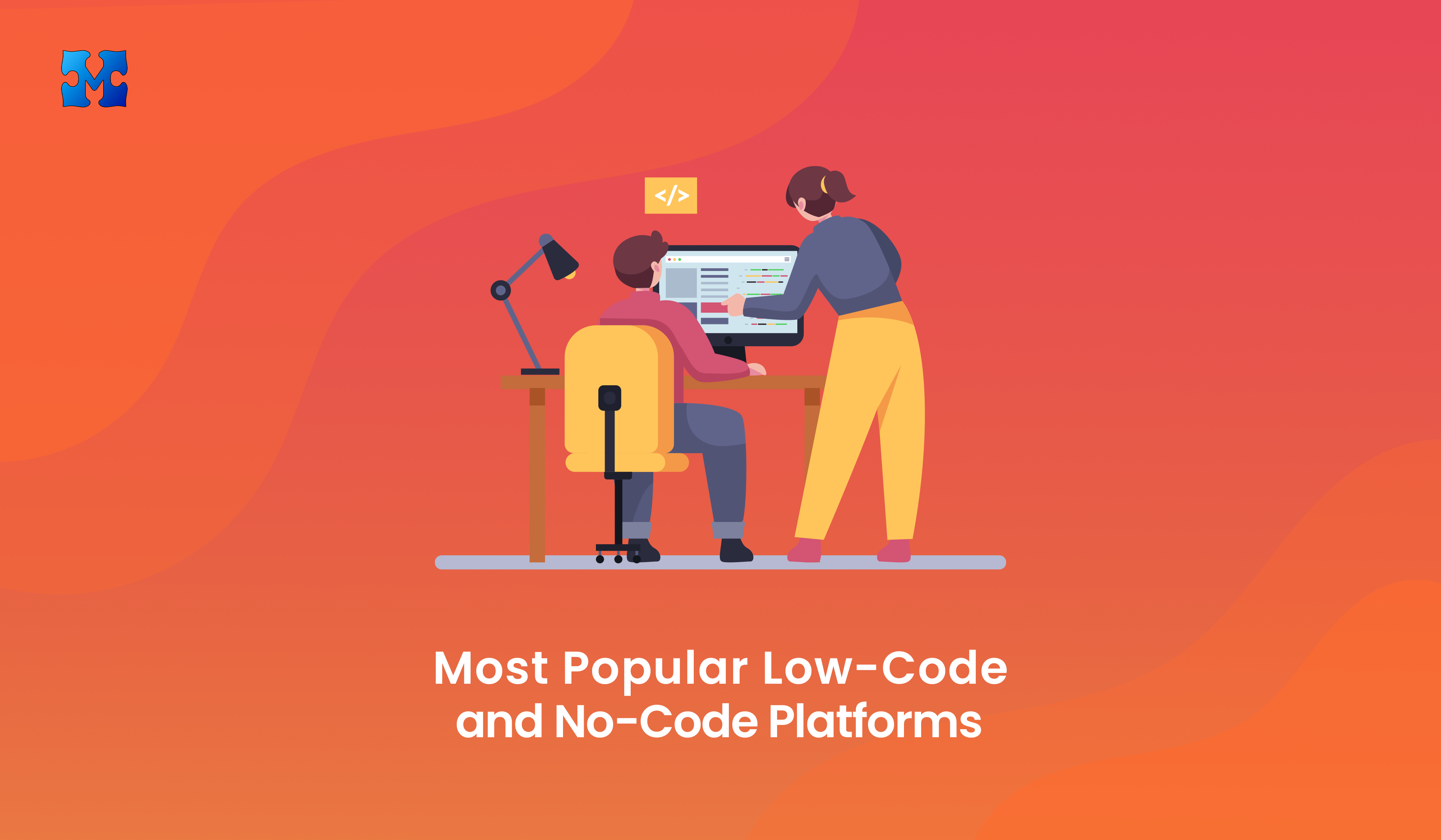Millennials have significantly simplified job processes, making remote and hybrid work more common. One of their biggest challenges now is the adoption of the low-code movement. While shortcuts can often lead to mistakes, knowing what you’re doing can make all the difference. The low-code and no code platforms movement aims to streamline processes, saving time, effort, and labor while achieving impressive results. As more industries adopt these platforms, they have shown to foster company growth by solving existing problems. Check out our list of the best low-code and no code platforms!
What Are Low-Code and No Code Platforms?
Low-code and no code platforms allow users to design and develop custom applications without needing extensive coding knowledge. Using intuitive graphical tools and pre-built components, you can quickly assemble applications.
Low-code platforms typically feature a drag-and-drop interface, enabling the creation of applications with pre-existing components like user interface elements, data models, workflows, and system integrations. They also offer automation features such as version control, testing, and deployment.
No code platforms provide pre-built templates and components, allowing customization of everything from user interface elements to data models, workflows, and integrations without writing code. For simple applications involving forms, workflows, or data dashboards, no code platforms are ideal.
Top Low-Code and No-Code Platforms
Siter
Siter is a no-code platform packed with features, allowing for creative application development tailored to designers’ and developers’ needs. It offers integrations with Google Analytics, Mailchimp, and Shopify. Users can create layers like in Photoshop and import designs from Figma, making it user-friendly. Siter also provides mobile-responsive design and SEO tools, perfect for beginners creating applications on the go.
Pulsetic
Pulsetic focuses on website status and incident management, ideal for startups aiming to minimize downtime. It monitors global data centers to ensure redundancy and localize outages, providing detailed analytics on website uptime and response time. Pulsetic allows you to create customized public status pages and real-time updates for your customers, including “status” badges for your team.
Salesforce Lightning
Salesforce Lightning is a low-code platform with tools for both developers and non-developers to build custom applications and automate workflows. While some coding might be needed, it features a drag-and-drop application builder with robust templates and modules. Users can also write custom code using Lightning Components, a powerful framework for building reusable HTML, CSS, and JavaScript components.
Kissflow
Kissflow helps businesses automate and streamline workflows with its user-friendly interface and drag-and-drop tools. Trusted by brands like Pepsi and Domino’s, Kissflow allows you to create applications, automate workflows, manage tasks, test templates, and handle support requests, significantly reducing manual effort.
Popupsmart
Popupsmart is a no-code platform for creating custom pop-ups and forms to boost website conversions. It offers conversion-ready templates, smart mode targeting, advanced targeting solutions, and gamification elements like spin-the-wheel and lottery. Popupsmart integrates seamlessly with popular email marketing and CRM tools such as Mailchimp, HubSpot, and Salesforce.
Google AppSheet
Google AppSheet is a no-code platform that enables the creation of custom mobile and web applications without programming skills. Featuring a drag-and-drop interface and the ability to create offline applications, it incorporates AI and ML tools, making the transition to no-code smoother for many companies.
Bubble
Bubble is a low-code platform with a drag-and-drop interface suitable for non-coders. Users can build workflows to automate procedures like email notifications, payment processing, and user management. Bubble supports API integration and offers a marketplace for buying and selling plugins, templates, and services. Being cloud-based, it ensures global accessibility and simplifies server maintenance.
Webflow
Webflow is a cloud-based platform that allows for the creation and customization of website layouts, typography, and styling using an editor interface. With pre-built templates, it speeds up the design process. Webflow’s responsive design capabilities ensure websites fit any screen size. Its hosting services and content management system make it easy to publish and manage content directly from the platform.
Will Low-Code and No-Code Platforms Take Over?
The rise of AI has stirred concerns about the future of developers and potential job losses, and low-code and no-code platforms are part of this conversation. While these platforms can automate many projects and quickly produce simple applications, professional projects still require the talent and skill that only experienced developers can provide. However, these platforms will undoubtedly bring significant changes by reducing the emphasis on effort, resources, and specialized skills for many projects.




